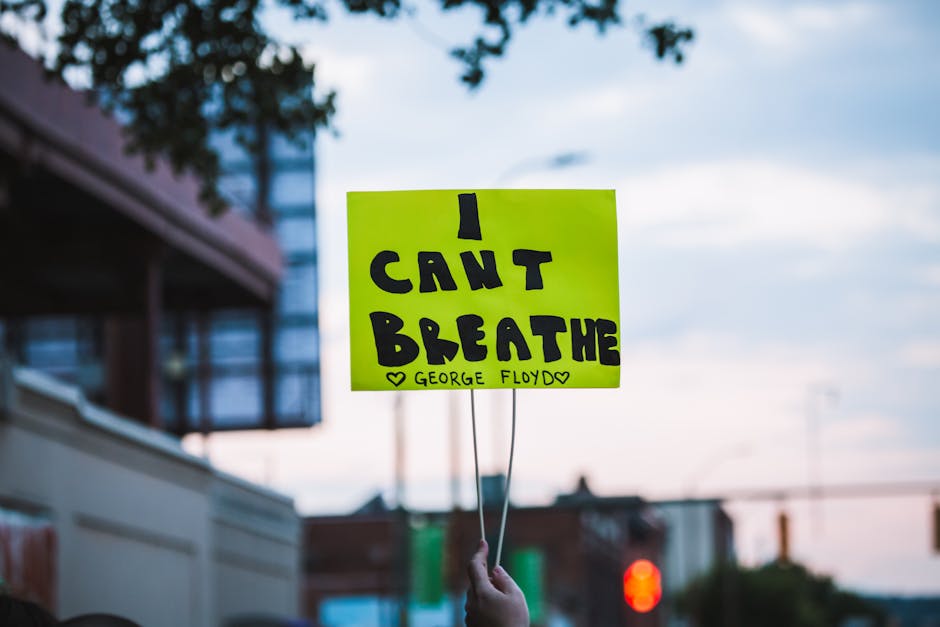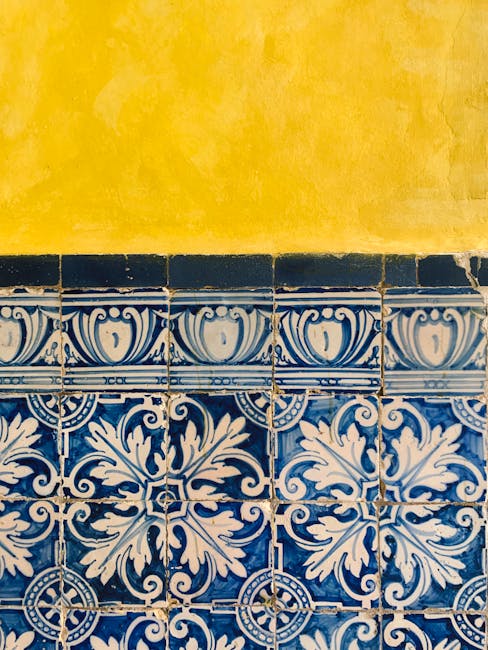Move over Shakespeare, there’s a new form of cultural critique in town: GIFs. From the early days of blinking text and rotating rainbow backgrounds to the high-resolution, endlessly-looping masterpieces of today, GIFs have evolved into a powerful tool for commentary and satire. So grab your popcorn and get ready to dive into the ever-changing world of GIFs in cultural critique.
Contents
- 1 Overview of GIFs in cultural commentary
- 2 Early uses of GIFs in critiquing pop culture
- 3 The rise of GIFs as a form of political satire
- 4 GIFs as a tool for highlighting social issues
- 5 The intersection of GIFs and art criticism in the digital age
- 6 The evolution of GIFs in meme culture
- 7 The potential future of GIFs in shaping cultural critique
- 8 FAQs
- 9 And that’s a wrap!
Overview of GIFs in cultural commentary
GIFs have become a staple in cultural commentary, providing a quick and often hilarious way to express thoughts and emotions. Whether it’s a scene from a popular movie or a viral moment from reality TV, GIFs capture the essence of a moment and can be used to make a point in a way that words just can’t.
From sassy eye-rolls to dramatic exits, GIFs are like the spice in the cultural commentary stew – they add that extra flavor that keeps things interesting. They can convey sarcasm, frustration, excitement, or any other emotion you can think of, all in a few seconds of looped animation. Plus, they’re just plain fun to look at!
One of the best things about GIFs in cultural commentary is their versatility. You can use them to react to breaking news, poke fun at celebrities, or even make a statement about social issues. The possibilities are endless, and the creativity of GIF makers knows no bounds.
So next time you’re engaging in some cultural commentary, don’t forget to spice things up with a perfectly timed GIF. Who knows, it might just make your point better than any words ever could!

Early uses of GIFs in critiquing pop culture
GIFs have been used as a hilarious and effective tool for critiquing pop culture for quite some time now. From poking fun at celebrities to highlighting the absurdity of popular trends, these animated snippets have become a staple in online commentary. Here are some early instances of GIFs being used to hilariously critique pop culture:
- One of the earliest examples of GIFs being used in this way is the iconic Oprah ”You get a car!” moment. This GIF quickly became a go-to response for anyone looking to mock excessive consumerism or over-the-top giveaways in the entertainment world.
- Another popular GIF that emerged in the early days of critiquing pop culture is the eye-roll GIF featuring actress Michelle Obama. This eye-roll has been used to express disdain for everything from problematic statements by celebrities to cringeworthy fashion choices on the red carpet.
These set the stage for the countless ways in which they would be utilized in the years to come. Whether it’s highlighting the ridiculousness of reality TV shows or calling out problematic behavior in the music industry, GIFs continue to be a powerful tool for poking fun at the excesses and absurdities of pop culture.
So next time you’re looking to add a touch of humor to your critique of the latest celebrity scandal or viral moment, consider throwing in a well-placed GIF for good measure. After all, a picture is worth a thousand words, but a GIF is worth a million laughs.

The rise of GIFs as a form of political satire
With the rise of social media platforms like Twitter and Facebook, GIFs have become a popular form of political satire. These short, looping animations have the power to convey complex ideas and emotions in a way that words sometimes can’t. From poking fun at political leaders to highlighting social injustices, GIFs have become a powerful tool for political activists and commentators.
One of the reasons GIFs have become so popular as a form of political satire is their ability to quickly engage and entertain audiences. Whether it’s a cleverly edited clip of a politician’s gaffe or a funny reaction GIF to a current event, GIFs have a way of cutting through the noise and capturing people’s attention. In a world where attention spans are getting shorter and shorter, GIFs offer a quick and easy way to get a message across.
Another reason for the rise of GIFs as political satire is their versatility. With GIFs, creators can easily make their point through visual humor, without having to rely on lengthy explanations or complex arguments. Whether it’s a sarcastic eye roll or a dramatic facepalm, GIFs have a way of expressing emotions and opinions in a way that words alone sometimes can’t.
As GIFs continue to gain popularity as a form of political satire, it’s clear that they will play an increasingly important role in shaping public discourse. Whether it’s through witty memes or clever animations, GIFs have the power to entertain, inform, and inspire – all while making us laugh in the process.

GIFs are the unsung heroes of the internet world, silently conveying messages with a dash of sass and a sprinkle of humor. When it comes to highlighting social issues, these little snippets of awesomeness pack a powerful punch. Need to address climate change in a way that grabs attention? Throw in a GIF of a polar bear lounging on a melting iceberg. Trying to shed light on gender inequality? Cue the GIF of a woman smashing through glass ceilings.
One of the perks of using GIFs to tackle social issues is their ability to simplify complex topics into bite-sized nuggets of truth. No need for lengthy explanations or boring statistics - just let a GIF of a confused cat trying to navigate a maze do the talking for you. Plus, with the vast library of GIFs available online, you’re sure to find the perfect visual representation for any topic you want to address.
Another reason why GIFs are perfect for highlighting social issues is their potential to go viral in a matter of seconds. A well-chosen GIF can spark conversations, inspire empathy, and even encourage action. Imagine the impact of a GIF showing a diverse group of people standing united against racism, spreading like wildfire across social media platforms.
In summary, GIFs are not just cute animations to add flair to your messages – they are powerful tools for shining a spotlight on the most pressing social issues of our time. So next time you want to make a statement, skip the long-winded speeches and let a perfectly timed GIF do the talking instead. It’s a win-win situation – you get your message across, and everyone gets a good chuckle in the process.

The intersection of GIFs and art criticism in the digital age
In the age of social media, GIFs have taken over as a primary form of communication. Whether it’s a cute cat GIF or a hilarious reaction GIF, these short loops have a way of capturing our attention and conveying emotion in a way that words sometimes can’t. But what happens when we combine GIFs with the world of art criticism?
Art critics are known for their lengthy essays and insightful analyses of pieces of art, but what if they were forced to condense their thoughts into a five-second loop? How would they capture the essence of a painting or sculpture in such a brief amount of time?
Imagine a GIF of a critic furiously scribbling notes while gazing at a Jackson Pollock painting, only to pause and nod approvingly at a random splash of paint. Or perhaps a GIF of a critic squinting at a Picasso and then throwing their hands up in confusion before bursting into laughter. The possibilities are endless when it comes to combining the worlds of GIFs and art criticism.
So next time you’re scrolling through your timeline and come across a GIF of a dancing frog or a flying taco, take a moment to appreciate . Who knows, you might just learn something about both art and the power of brevity.
The evolution of GIFs in meme culture
GIFs have come a long way since the early days of dial-up internet, where they were nothing more than pixelated animations that took forever to load. Now they are an essential part of meme culture, adding flair and humor to online interactions.
One of the most popular uses of GIFs in meme culture is to convey emotion. From eye-rolls to laughter, there is a GIF for every mood. It’s like having a virtual arsenal of reactions at your fingertips, ready to unleash at a moment’s notice.
With the rise of social media platforms like Twitter and Instagram, GIFs have become even more ubiquitous. They are the perfect way to spice up a boring text post or add some pizzazz to a comment thread. Plus, who needs words when you have a perfectly timed GIF of a cat falling off a table?
As meme culture continues to evolve, so too will the role of GIFs. Who knows what the future holds for these tiny, animated gems? One thing’s for sure – they will always have a special place in our hearts (and in our meme folders).
The potential future of GIFs in shaping cultural critique
GIFs have become more than just animated images – they have transformed into a powerful tool for cultural critique. With their ability to succinctly convey complex emotions and ideas, it’s no wonder that they have found a place in shaping the way we comment on society.
Imagine a world where GIFs are the primary language of cultural critique, where entire conversations are had through a series of looping images. Instead of writing long-winded think pieces, we can simply reply with a perfectly timed GIF of a confused cat or a sassy Beyoncé.
Just think about the possibilities:
- Politicians caught in a scandal? Cue the GIF of Oprah shouting, “You get a scandal! And you get a scandal!”
- Celebrity feuds heating up? Use a GIF of Kim Kardashian sipping tea with a knowing look.
- Social justice issues demanding attention? A powerful GIF of Martin Luther King Jr. giving a speech could say more than a thousand words.
As GIFs continue to evolve and become more integrated into our online communication, the potential for them to shape cultural critique is limitless. So next time you want to make a point about society, ditch the essay and send a GIF instead. After all, a picture is worth a thousand words - and a GIF is worth at least a million.
FAQs
Why are GIFs such a popular form of cultural critique?
Well, my friend, GIFs are like the emojis of visual communication. They’re short, sweet, and to the point, making them the perfect weapon for poking fun at society’s quirks and absurdities.
How have GIFs evolved in their use as cultural critique over the years?
Oh, the evolution of GIFs has been quite the ride! From the early days of dancing baby memes to the rise of reaction GIFs, these little moving pictures have come a long way in becoming a powerful tool for social commentary and political satire.
What impact have GIFs had on the way we consume and engage with cultural critique?
Forget long-winded think pieces and boring academic essays – GIFs have revolutionized the way we consume and engage with cultural critique. With just a quick scroll through your social media feed, you can get a dose of clever commentary on everything from pop culture to politics, all in the form of a delightful little looped animation.
Can GIFs be used to challenge societal norms and spark important conversations?
Absolutely! GIFs have the power to challenge societal norms and spark important conversations in a way that’s both accessible and engaging. Whether it’s highlighting issues of race, gender, or class, GIFs can serve as a visual tool for amplifying marginalized voices and shedding light on important social issues.
What role do GIFs play in shaping our understanding of contemporary culture?
GIFs are like the cultural critics of the digital age, offering witty and insightful commentary on the ever-changing landscape of contemporary culture. Whether it’s dissecting the latest viral meme or skewering the antics of our favorite celebrities, GIFs play a crucial role in shaping our understanding of what it means to be alive and kicking in the 21st century.
And that’s a wrap!
So next time you see a GIF pop up in a cultural critique, remember its humble beginnings as a simple looping image on the internet. From quirky reaction shots to poignant social commentary, GIFs have truly evolved into a powerful tool for cultural critique. So go forth and GIF away, my friends!
